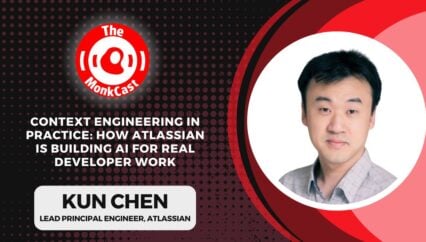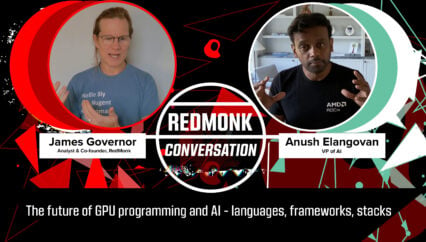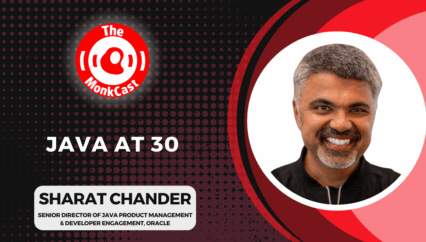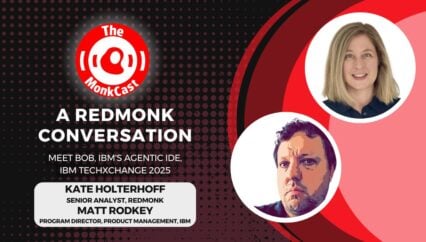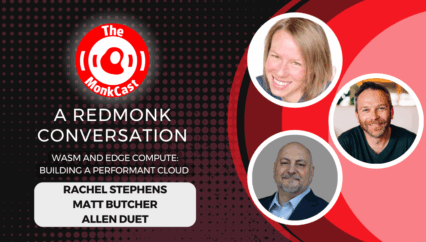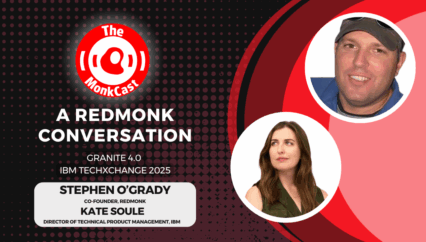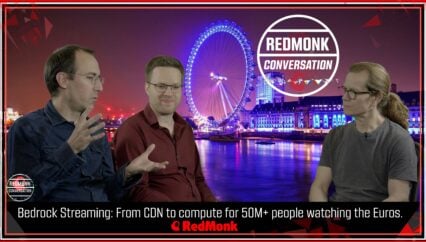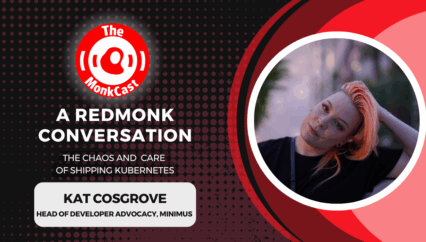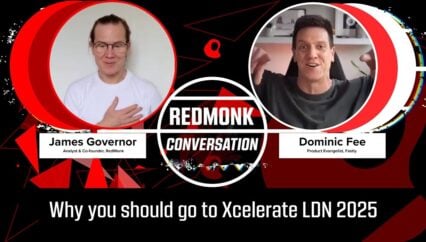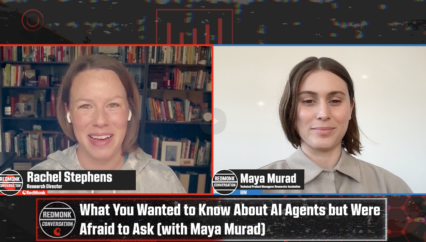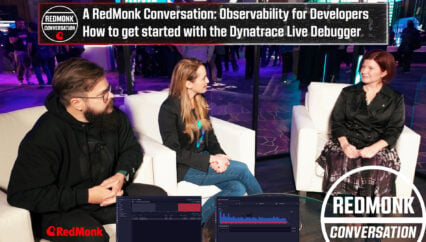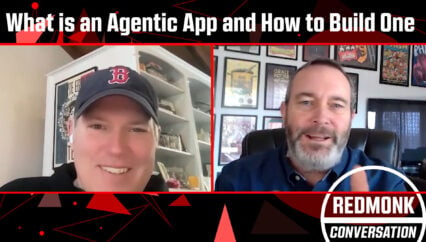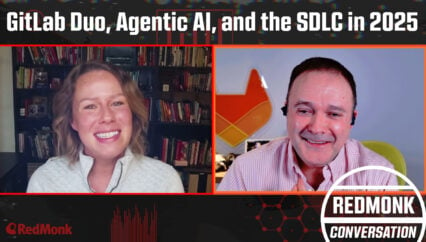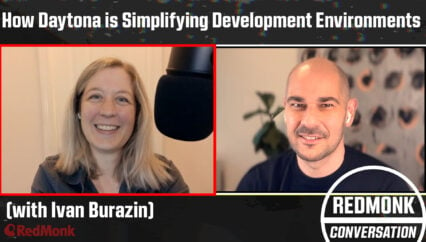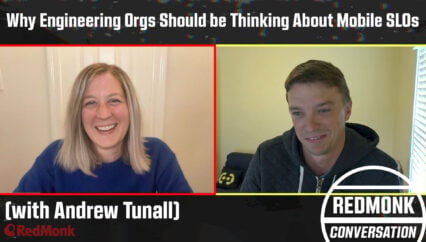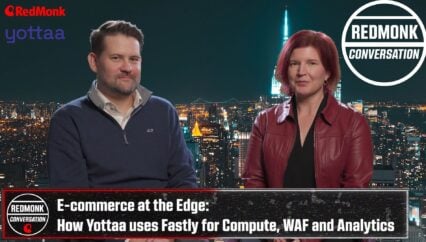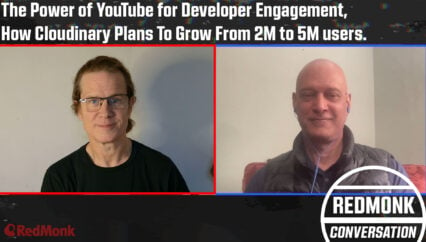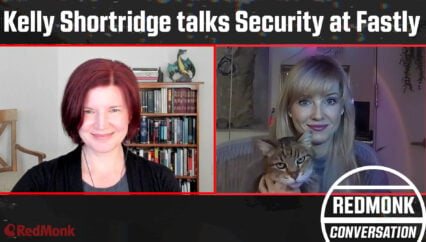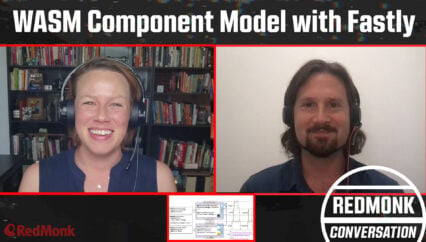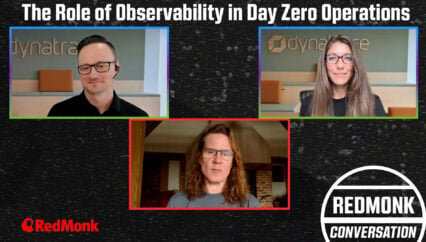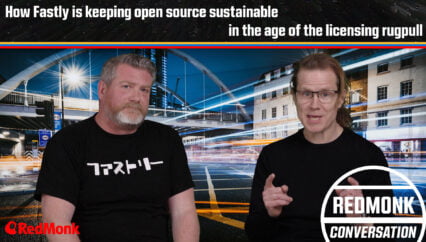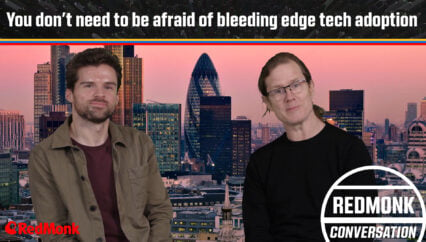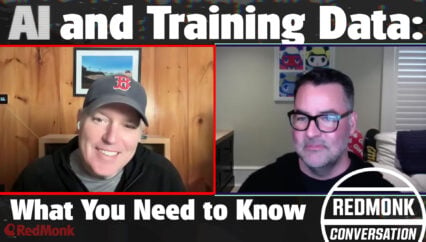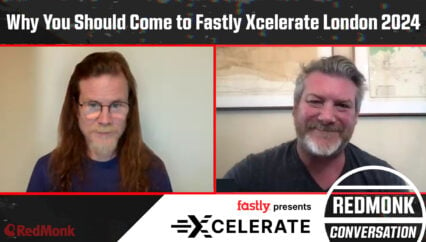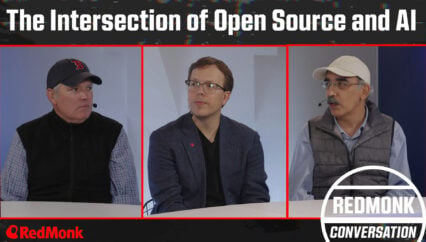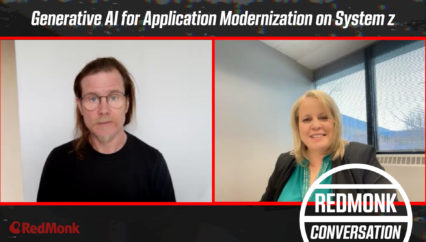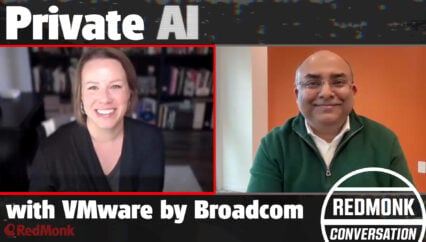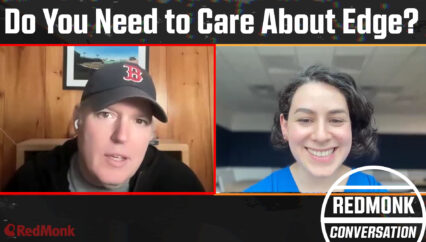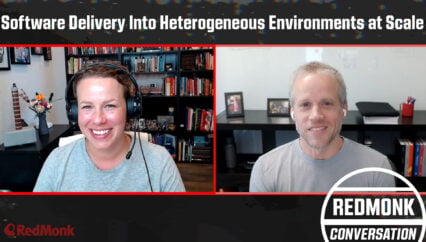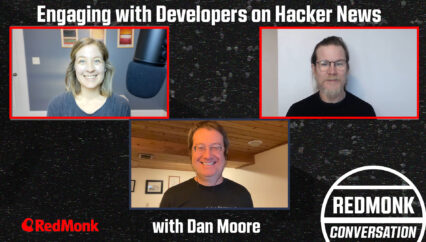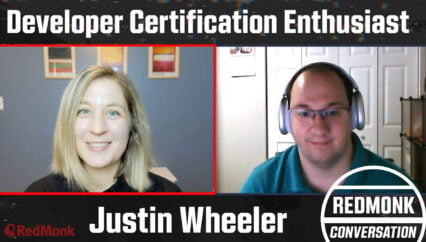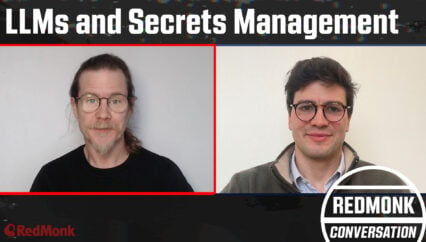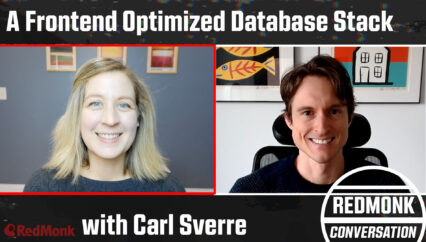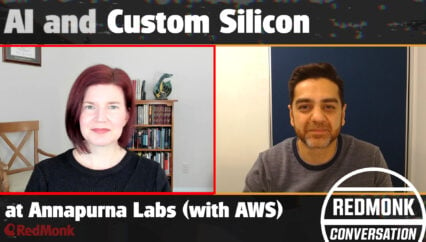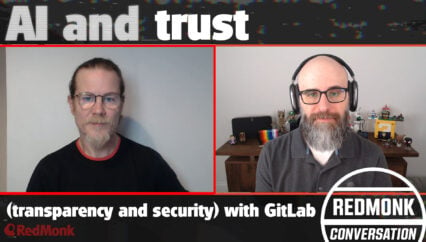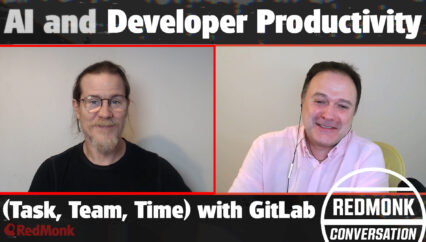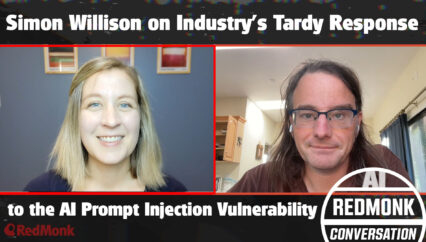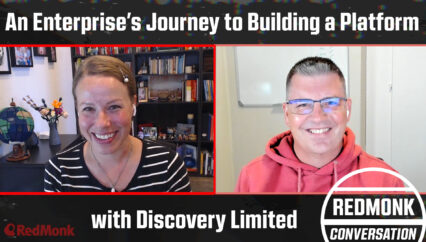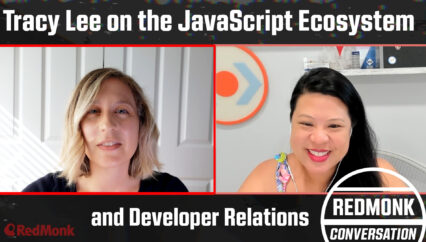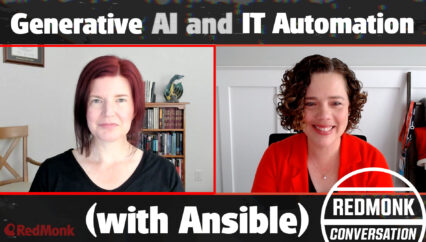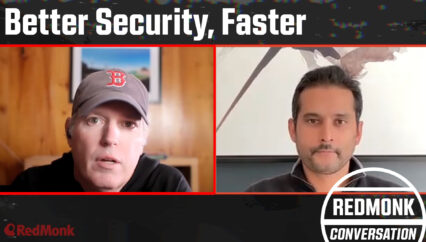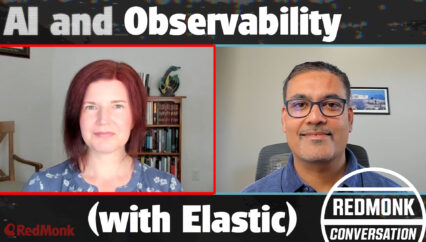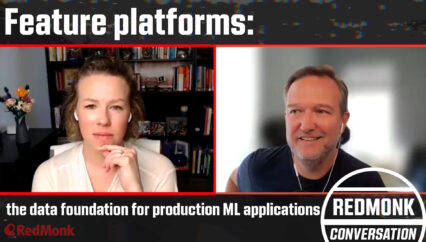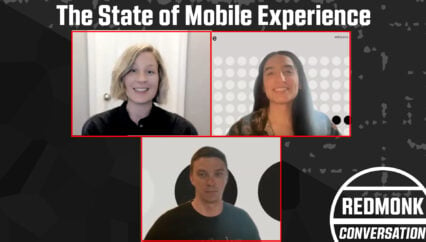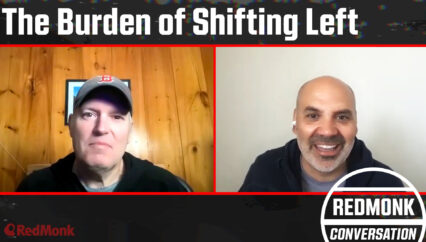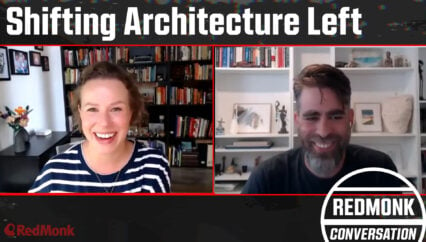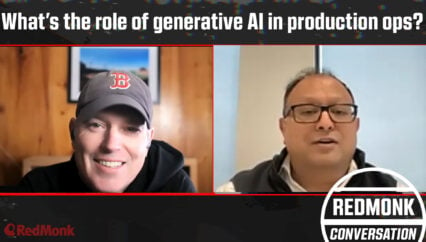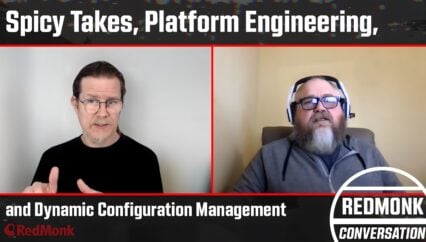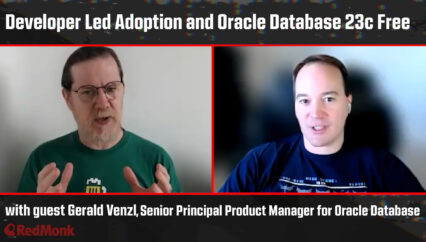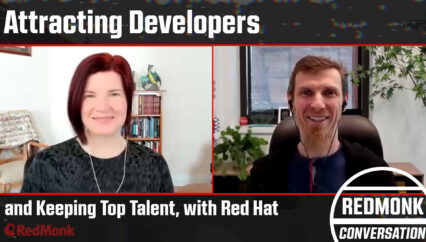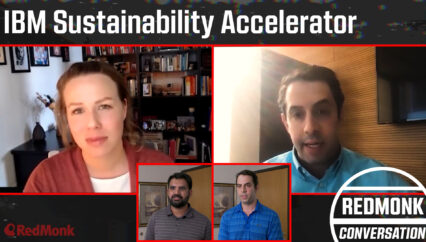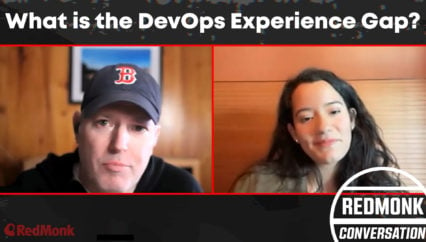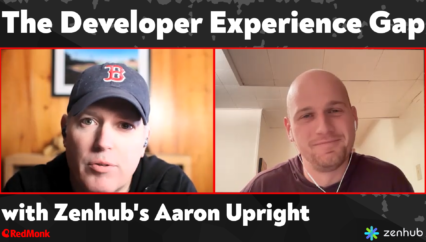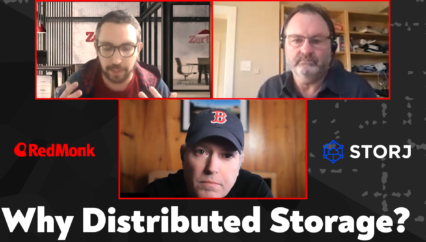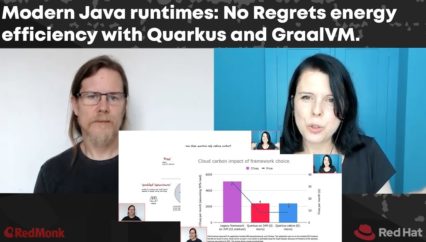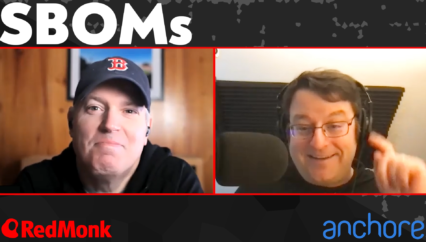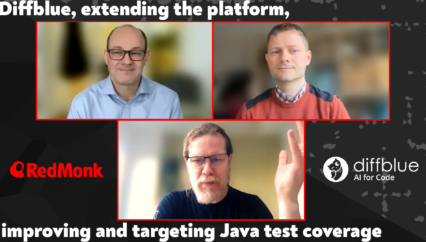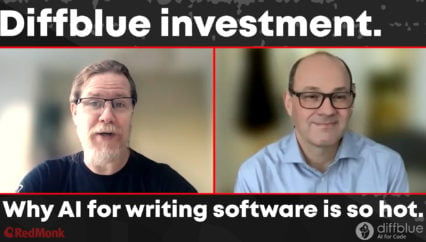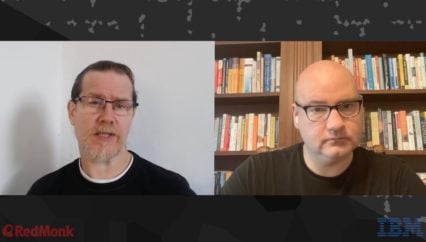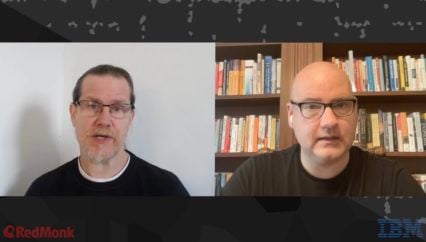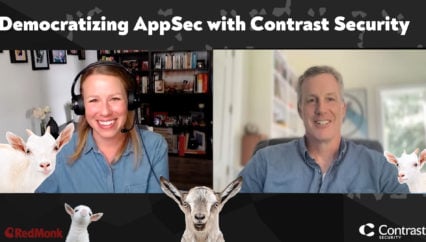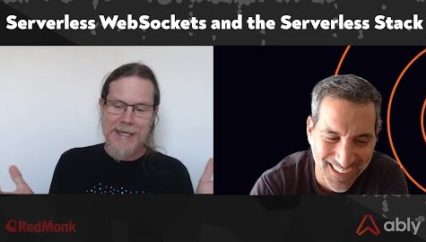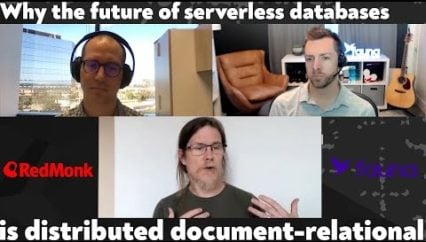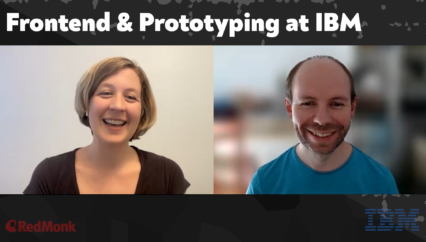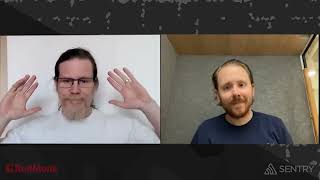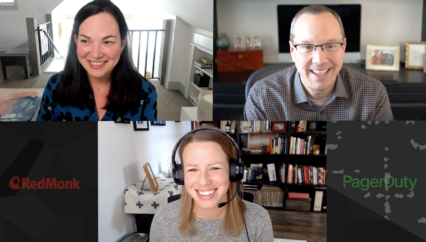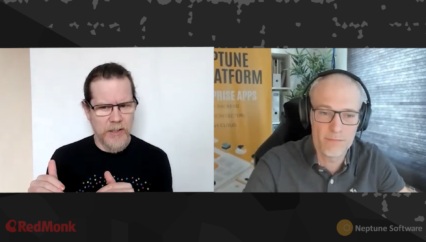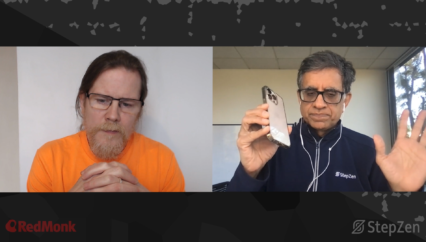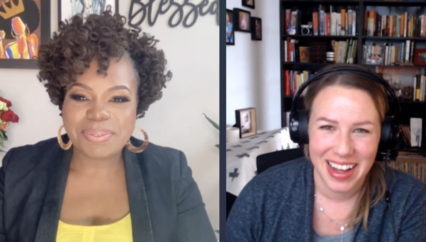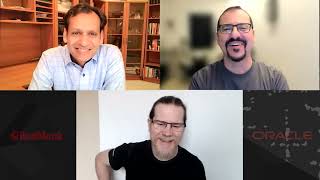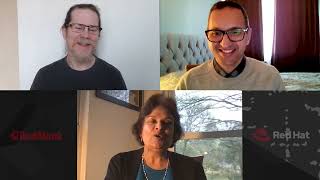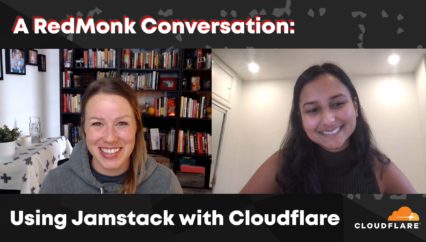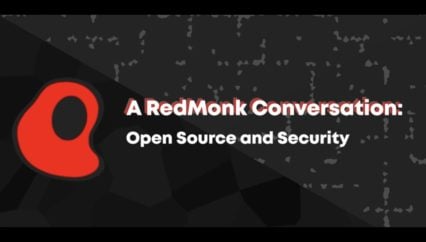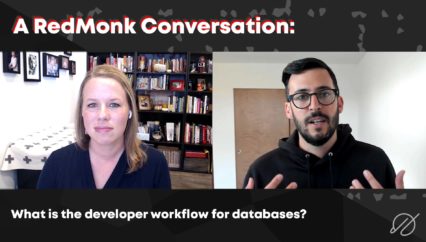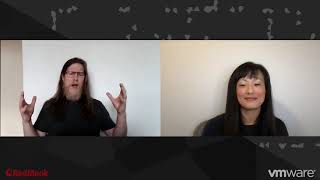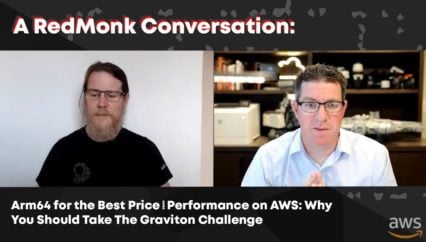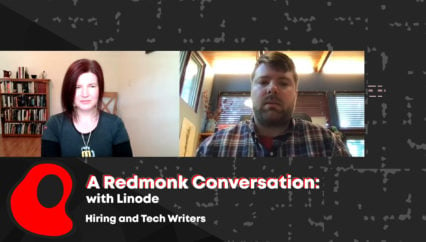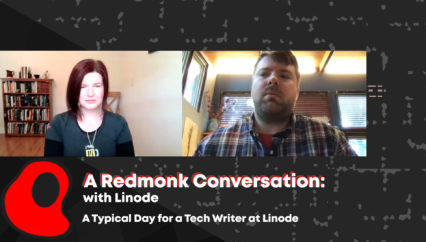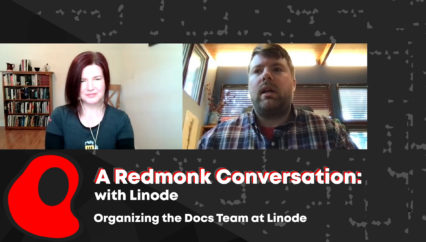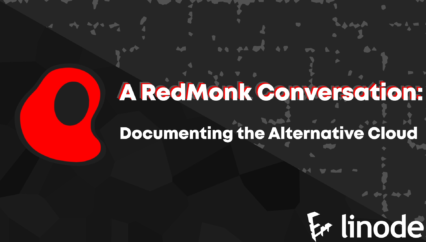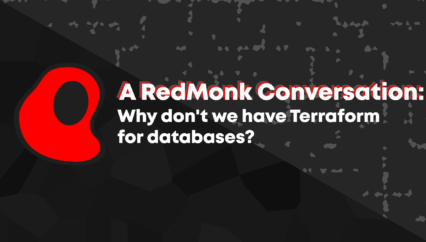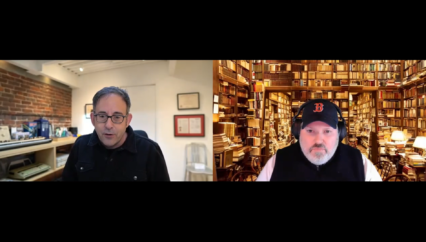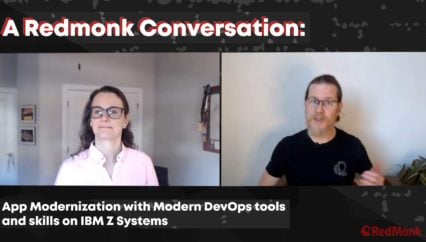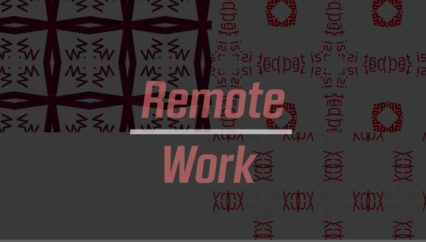In this RedMonk Conversation, James Governor talks with Prashanth Shenoy, VP of Marketing for Broadcom’s VMware Cloud Foundation (VCF). They discuss the impact of VMware’s integration into Broadcom, including the shift from perpetual licenses to subscriptions, portfolio and ecosystem simplification, and the evolving role of cloud admins, platform engineers, and developers. Shenoy outlines how VCF supports both VM and containerized workloads, integrates Kubernetes services, and enables flexible developer experiences. The conversation also explores VMware’s Private AI strategy with NVIDIA, addressing digital sovereignty, GPU virtualization, and performance benchmarks for AI workloads.
Rather listen to this conversation as a podcast?
Transcript
James Governor: Hey, this is James Governor, co-founder of RedMonk, and we’re here for another RedMonk conversation. Today, I have Prashanth Shenoy, VP of Marketing in the VCF division of Broadcom, and we’re here to talk a bit about basically the platform. So what do you run your applications on? What are you using as the place where all of those workloads that we’re driving in the enterprise get deployed to? VCF clearly has an opinion. Broadcom and VMware has an opinion. Shenoy is here to represent that. So let’s start, I guess, let’s start at the top. Here we are. We’re about 18 months in since the acquisition, and there has been quite a lot of disruption. We’ve seen some vocal, you know, some of that disruption has been vocal in terms of partners, in terms of customers. So if we think about the process from the beginning of the integration process of the acquisition, and going through your pricing changes, what’s happened in the intervening time and are things beginning to settle down?
Prashanth Shenoy: Yeah. Hey, first of all, James, thanks a lot for inviting me. This is an exciting time for us and the market where the market is going with all the buzz around Gen.ai, as you know. But yeah, it’s been, I think, close to a year and a half, as you mentioned, since VMware became part of Broadcom. Although, as you said, 18 months, for me, it feels like five years.
James: It feels like for all of us. We’re all living, I mean, not even dog years, insect years these days. We’re mayflies.
Prashanth: Absolutely. Yeah.
James: Mayflies in the era of Gen.ai.
Prashanth: So really fast-paced. And frankly, both the market has been moving fast and VMware as part of Broadcom has been making some fundamental and pretty drastic changes, as we put it. Right. So, and I would say that the changes, interestingly enough, if you look at what VMware was doing before we became part of Broadcom, we were actually on the path of making all of these changes. It just so happened that when we became part of Broadcom, we just made these changes in force. Right. So, and I would categorize these changes in three big areas. Right. So, number one, the biggest thing where customers have been vocal and there’s been a lot of noise, right, is our business model simplification, which is the move from a perpetual licensing-based model to a subscription-based model. And James, you follow the industry closely. We are literally, possibly the last software enterprise software vendor that made this transition. But it was pretty disruptive, right? When people move from a perpetual way of doing business to a term-based subscription license, it caused a lot of changes. So that was number one, right? And that resulted in a shift in terms of how we price our product. In fact, when we had our subscription product for VCF, it was $700 per core per year. And we cut it down for $350 per core per year, the list price, right? Which is a 50% reduction. So, the contrary to popular belief that we raised the price, we actually decreased the price. But there was a shift from perpetual to subscription. Number two was more of our portfolio simplification. When I joined VMware before Broadcom, while we were an awesome technology company, we had provided every choice to our customer. In fact, we had close to 9,000 SKUs for our cloud infrastructure product.
James: Things definitely got complicated. There is no doubt about that.
Prashanth: Yeah. And we were doing it with the right intention.
James: Was there room to simplify? A hundred percent.
Prashanth: Yeah. So, we went ahead and simplified the product based on what the customer wanted. The customer wanted like, hey, give me an awesome compute virtualization platform, which is VMware known for 25 years. That was our VCF foundation. And give me a platform that truly helps me give a strong alternative to public cloud, like a true private cloud platform, right? And that was VCF. So, that’s where we focused our energy and intention. That was the portfolio simplification. And the third part was VMware is always known for building an ecosystem. How do we simplify the overall ecosystem? So, it’s standardized. It is very consistent. So, our customers have flexibility and choice the way they want to deploy our VMware Cloud Foundation. Whether it’s a managed service, whether it’s on a hyperscaler, whether it’s in a co-location, whether it’s at the edge, whether it’s on an on-premise. So, how do we get the right set of partners who can truly deploy a private cloud and provide all of the services on top of that, on top of VCF, right? So, that’s where the out-to-market simplification happened. So, that’s been 18 months. So, I call the kind of the wave last year and the year before that was all about the portfolio simplification. This year has been all about transformation and moving to help our customers adopt those services. So, it’s been a rapid change. A lot of our customers now understand the value that the platform provides. In fact, we’ve seen some major improvement in the total cost of ownership once they go through the CapEx hurdle. And we have seen a lot of our customers move their workloads, including the modern workloads, containerized workloads, onto VCF to run their business. So, it’s been a pretty exciting transformation, but with its bumps. We could have done a lot better in terms of communicating why we did this and bring the customer along. But we were so fast in making the changes that it caused some disruption in the market.
James: Okay. And on that note, I mean, is there just a feeling about being clear about who the customer is?So, what do you want the VMware customer to look like? So, some of the simplification is also your relationship with customers.
Prashanth: Absolutely.
Who is the ideal VMware customer? How are you consolidating and simplifying for them? What do they look like? Who are they?
Prashanth: Yeah. Frankly, at a broad level, we are looking for customers who are truly on their way to cloud transformation, right? One, they’re trying to modernize their complete infrastructure. Number two, they’re trying to modernize their application that the infrastructure literally lives for, right? That’s the main job of the infrastructure. And three, they’re trying to modernize their security, right? So, that’s from an IT perspective. And all of this means that these are pretty strategic customers that are looking at like, hey, how can I make IT the enabler to run my business and not a cost center, right? And especially with Gen.AI right now, things around compliance, privacy, security, and the need for business to really adopt AI to make sure they’re not only helping their engineers, providing new services, generating new revenue streams, and things change on a weekly basis, as we were just talking about, right? So, how can we help customers move at the pace of AI, pace of software, pace of what the developer needs? Those are the kind of customers that we are truly helping to work with to provide them a platform, the private cloud platform, on which they can run their business for both their containerized application as well as the VM application. But fundamentally, our relationship has been truly with these VI admins, right? So, who have been born and bought up with vSphere as their virtualization platform for the last 25 years? We really want to shift them to be a cloud admin, a cloud operator, right? So, and think platform first and not component and product first. So, that’s kind of the shift that is going. So, it’s not just about the technology, but it’s also about the people reskilling them to be more of a cloud operator, cloud admin, as well as the processes that we can put in place to help drive this accelerated transformation in a phased approach.
James: Okay. So, I think a couple of things come out of there that I’d like to drill into. So, one would be, as you say, this operator persona.
Prashanth: Yeah.
James: That’s not a developer persona, but of course, the competition today, we’re into multiple generations of getting much, much better at developer experience. So, certainly the rate of product delivery that we’re seeing in the cloud around, and you mentioned AI a couple of times. Developer experience is absolutely crucial. So, what are you doing in that regard? Because VMware, we think of them for operators, how do you become a platform that is also one that developers are going to want to use?
Prashanth: Absolutely. I think, as I mentioned, infrastructure is just a means to an end, right? The end goal is to help the developers build their application and the infrastructure just need to get out of the way. So, that’s the whole idea. Our vision is to make the infrastructure disappear for the developer so it’s frictionless experience for the developer. So, I would say we cater, James, to three key personas. One is the cloud admin that we all talked about. For them, it’s all about, hey, I need to make sure my cloud is running with the right availability, the right security, the right operational efficiency. So, we are bringing the compute, network storage, virtualizing it, and providing a highly automated layer for them to build, deploy, and run their infrastructure. So, that’s number one. Number two is the platform engineers and the DevOps, the consumer of the application. And this is where their goal is like, hey, I need to provision all of the services that my developers need in a highly secure, highly reliable manner and in a very cloud-like manner, right? That the developers are so used to in the public cloud world, right? So, they can really scale and provide this self-catalog of services, but give the flexibility and choice for the developers, whether they want to use infrastructure as code, whether they want to use a self-service, whether they want to use their favorite API, etc. So, that’s the platform engineer. And then the final persona is absolutely the developers who actually don’t even want to think about the infrastructure. They are just like, give me easy access to the service. I don’t want to talk to the IT, no ticketing, etc. I just want to say, this is the service that I need. I need a modern database. I need a container management. I need some image registry, etc. And then it automatically happens for them, right? So, those are the three personas that we are catering to. And VCF has built in for all of these, right? So, the VMware Cloud Foundation. Obviously, it has the VCF Operations Console, which is for the cloud admin persona, right? But then it has the VCF Automation Console that comes with the self-service catalog of services that I mentioned, right? With a VM service, Kubernetes runtime service, all the network service, the container management service, backup service, image registry, identity and access control, multi-cluster management, all of these things that is needed to run these container and VM workloads and provide those services in a frictionless, automated manner to the developers. So, those two are really focused where we want to make sure VCF is providing first-class citizen service, not only to VM applications, which we’ve been doing for the last 25 years, but also containerized application, which frankly, we’ve been doing for a long year.
James: Talk a bit more about that, because previously, they were sort of separate parts, separate parts of the portfolio. VMware known for virtualization. But as we’ve seen this transition where, and I think to your point, in fact, we do want Kubernetes to get out of the way. Developers shouldn’t be worrying about, you know, a bunch of YAML and a bunch of Helm charts and constantly thinking about the underlying infrastructure. What’s your strategy there vis-a-vis bringing together assets that are VM-based or that are container-based?
Prashanth: Yeah. Step one is, James, most of our customers wanted to make sure, hey, when I run VMware Cloud Foundation, I want to have all of the runtime Kubernetes services also available along with the VM services. So, what was previously known as Tanzu Kubernetes Grid, or TKG, right? So, and it is always part of vSphere supervisor services, right? Now, we brought that in, we enhanced it pretty drastically. Right now, we are upfront compliant to the Kubernetes upfront distribution, right? So, with 1.3.2 and 1.3.3. One of the big things was like, hey, I need to be able to upgrade the Kubernetes runtime at the same level as the upstream Kubernetes, right? Not when I upgrade my vSphere, my vCenter, right? Because those get upgraded really, really fast, whereas vCenter once every six months or a year, et cetera, right? So, that’s the first thing that we made so that, hey, we provide the same kind of Kubernetes services that public cloud and hyperscalers provide, right? So, there’s no distinguish between the two. That’s number one. So, all of the runtime capabilities, which we call vSphere Kubernetes Service, is built in and provided as part of vCF. The next thing was, there were a lot of other Tanzu assets, right? Like Tanzu container management, multi-cluster management, et cetera. We also brought that and built into the platform, and that’s the work that we’ve been doing. That was called TMC, if you will, Tanzu mission control. Now, that is bought into the platform, and all vCF customers are entitled to doing that, and we are integrating that into a platform. So, that becomes our vSphere multi-cluster management system, right? So, between those two, we are truly providing all of the Kubernetes runtime, all of the Kubernetes orchestration system, and the whole slew of services that I talked about, the image registry, the storage services, the Istio networking and container networking services, et cetera, identity and access control. All of these IaaS services are already built in and part of the VCF automation. So, that’s the big shift where we want to make sure all the things that infrastructure and a cloud operator and a platform engineer requires to run, deploy, and manage and operate Kubernetes application and provide easy access to these for the developers are already well and done. And then, on top of this, we have the PaaS layer, which is our Tanzu platform, which provides all of the developer tools required for them to actually build their applications and run their modern application. So, between VCF and Tanzu, we truly believe we have a very comprehensive platform for our customers, not only to build, run, deploy, optimize their infrastructure for modern applications, but also to build and run their modern applications in a really fast and agile manner.
James: Okay. Let me ask you, just a quick question there about the Kubernetes world. As I said, in some ways, we want to not have to think about the containers, but obviously, that ecosystem has been very oriented to open source. What’s your view of your evolving relationship there, given you want to support those runtimes?
Prashanth: Oh, absolutely. So, I mean, if you look at the cloud native registry and foundation, right? So, we are pretty much in the top three in terms of community and contributing to open source, right? So, even as part of Broadcom. So, that’s maybe a perception challenge there, but we’ve always been as part of VMware and we continue to be as part of Broadcom. That’s number one, right? So, we provide a lot of open source contribution. So, that’s number one. Number two, when it comes to our platform, the reason why we didn’t put all of the Tanzu developer capability also into VCF was because we wanted to make sure we provide flexibility and choice and open source tools that a lot of our developers love. And they’re not going to say, I will only use Tanzu, right? So, we didn’t want customers to force into that. So, the VCF itself is an open platform where we have third-party integration. So, developers can use any open source tool and repo of their choice, right? So, that’s the big distinguishing. Although we do have all the assets for developers to build and run their application through Tanzu, we also wanted to provide through VCF choice to say, bring your own tools, bring your own repo, bring your own image registry, bring your own data services, if you will, although we have built-in data services and go to Tom, right? So, that flexibility and choice is important and very critical to the developer and we made sure we do that.
James: Yep, but not everything’s open source. That’s right. It doesn’t matter where we are in the world. That’s the case in the world of tech anyway. And in that note, maybe a transition to, let’s go to a last question. You alluded to some of this earlier. I mean, one of the things that’s very interesting as an industry is that we were in a period of such excitement around AI that continues to be, you know, certainly a top three, you know, top concern for enterprises today, regardless of geography. Now, certainly in some geographies and Europe in particular, the growing focus on digital sovereignty is ever more important. So, we’re seeing that again as a top concern for enterprises. So, I think those two things, AI and digital sovereignty, are really converging from a customer needs perspective. Pretty clearly, VMware is quite well positioned there. On the other hand, there are some real challenges because one of the things about AI is it’s so much associated with the GPU game, so much associated with GPUs in the cloud. So, tell me a bit about your strategy for AI, digital sovereignty, and how you can provide performance, and what sorts of partnerships? You talked about the ecosystem earlier, so that you can have those GPUs that customers want in order to train models and run models effectively. What are you doing in that space? So, two questions. Performance, but also digital sovereignty and AI. I’d love to hear a bit about what you’re planning and what you’re executing in that area.
Prashanth: Yeah. Let’s talk about the second part first, James, because that’s kind of the Uber strategy, right? So, we call it the private AI, as you very well know. And this happened again, even before VMware became part of Broadcom, right? So, because we were getting a lot of customer input to say, hey, with this Gen AI, can you tell me, like, I have extreme concerns around the data that is intellectual property of mine, the privacy, and obviously all of the sovereign requirements, especially in Europe and APJ. Okay. So, but I do want to use this Gen AI to help build these applications, to make it a lot more revenue-driven and new kind of services, right? So, the private AI was born based on how can I provide all of the capabilities of Gen AI, but with the privacy, security, compliance, sovereignty needs that a lot of our customers, especially in regulated industry like FSI, healthcare, public sector, defense, et cetera, want, right? So, that was, so we have a solution called Private AI Foundation that we built jointly with NVIDIA. And all of the AI services from an infrastructure perspective is already in VMware Cloud Foundation. The bread and butter of VMware, which is virtualization. We can virtualize GPU. GPU is one of the most expensive resource for the company and IT for sure, right? So, how do we make sure GPUs are effectively utilized? How do you do consolidation of GPUs? How do you provide visibility, throughput, monitoring, et cetera? All of that is built into our core platform, right? So, that’s number one. And then, all of the virtualization benefits that we’ve been doing for the last 25 years are now brought into the GPU world. Things like dynamic resource scheduling or DRS kind of a capability. V-motion for GPUs, right? When you want to run inferencing and training, you need to have really fast movement of data and connectivity. So, how do we make sure these can move without the downtime for training is a huge, huge thing. So, we pretty much have less than two seconds of stun time and zero downtime for this AI workload mobility, right? And that’s the second part. And when it comes to the third thing, which is what you’re mentioning around, hey, what are we doing when it comes to performance? One of the key, again, misconceptions in the industry has been like, hey, you can run all these AI workloads on bare metal. If you look at all of the hyperscalers, they don’t necessarily run it on bare metal. They have a Linux kernel that they run on top of. It’s the same thing with us, too. We run it on top of ESX, which is our hypervisor. And all of the capabilities of virtualization that we built in also comes along with that. So, when we have run performance benchmarks with MLPerf, we’ve seen pretty much VCF and vSphere retaining 99% of the performance of a bare metal with all of the other virtualization capabilities that I just talked about, right? And these are for big LLM models, too, right? So, we’ve seen a lot of use cases on VCF where it’s mainly used for inferencing, for RAG, the retrieval augmented generation kind of use cases, and also for fine tuning with their own data, right? So, they can still have security and privacy, but run it at the right performance with their own model without having to give it away to a place where they are not in control of the data or the access. So, those are the things that we are doing through VCF built in from our infrastructure, as well as all of the services on top of it. And we’ve worked with, obviously, NVIDIA, with AMD, with Intel on the infrastructure side, as well as a lot of ISVs on top for building their own models and all of the AI services that run on top of VCF.
James: Great. Okay. Well, we’ve talked about pricing. We’ve talked about containers. We’ve talked about developer experience. And we’ve talked about AI. AI. Those are all key topics in 2025. Prashant, thank you so much for joining us today. This was another RedMonk conversation. And yeah, if you’ve got any questions out there, you’ve been watching this, you’ve got any thoughts, please do comment, like, subscribe, share it with your friends. This was, as I say, a RedMonk conversation with Prashanth Shenoy from Broadcom VCF. And yeah, thanks, everybody, for joining us today.
Prashanth: Thanks, James.
